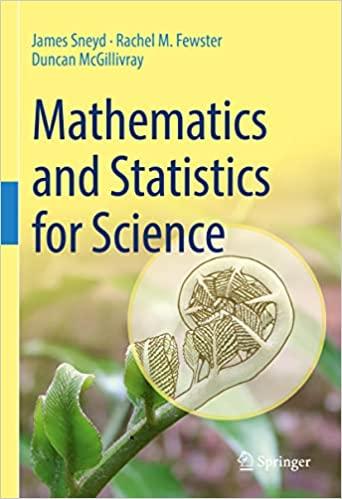Not so very long ago, when handwriting was still a thing, people were interested in what a
Question:
Not so very long ago, when handwriting was still a thing, people were interested in what a person’s handwriting might reveal about their personality. Employers would pay professional graphologists to examine handwriting samples from job applicants. A BBC team decided to investigate. They took samples of handwriting from two groups of people whose personalities they expected to be very different. One group were monks, the other were actors. They asked professional graphologists to classify which samples were supplied by the monks, and which were supplied by the actors.
Inspired by the BBC programme, we carried out a similar investigation in a class of 98 undergraduate statistics students.
The handwriting samples in Fig. 32.3 were kindly provided by one monk and one actor. Each student was asked to guess which sample of handwriting was which. Out of the 98 students, 58 guessed correctly.
The success rate in the class is about 59%. That’s more than 50%
chance. We’re trying to find out if the excess is large enough to suggest something beyond guesswork is going on.
We want to test whether this observed success rate gives evidence of some sort of genuine ability to discriminate monks from actors based on handwriting, or whether it could just reflect a 50-50 guess from each student.
Fig. 32.3: Two handwriting samples, one supplied by a monk, the other by an actor. Which do you think is which?
a. Let X be the number of correct guesses out of the 98 students. Assume all students guessed independently. Write down the appropriate null hypothesis, H0, and alternative hypothesis, H1, in terms of the distribution of X and its parameters.
b. Sketch as a curve the shape of the probability distribution of X under the null hypothesis. Your sketch should have The null distribution is discrete, so it’s most accurately plotted with a barplot. However, it’s easier to use a curve for your rough sketch.
axes labelled x and P(X = x). Mark on the sketch the upper and lower limits of x, and the distribution centre.
Also mark the observed value x = 58, and shade under the curve the area represented by the P-value.
c. Write down the R command for the P-value, run it in R, and interpret your findings. Does this study provide evidence of a systematic ability beyond guesswork to classify the two samples correctly?
Step by Step Answer:

Mathematics And Statistics For Science
ISBN: 9783031053177
1st Edition
Authors: James Sneyd, Rachel M. Fewster, Duncan McGillivray





